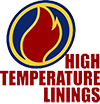A number of customers have asked if HTL can assist them in developing the Burn Sequence Chart / Program that is now mandated by the 2012 Edition of NFPA 1403.
The new standard requires that “burn sequence charts” be developed to define fuel loads and numbers of evolutions that can be safely conducted in each burn room of the live fire training structure. The standard includes the following language:
7.3 Sequential Live Burn Evolutions.
7.3.1 The AHJ shall develop and utilize a safe live fire training action plan when multiple sequential burn evolutions are to be conducted per day in each burn room.
7.3.2 A burn sequence matrix chart shall be developed for the burn rooms in a live fire training structure.
7.3.2.1 The burn sequence matrix chart shall include the maximum fuel loading per evolution and maximum number of sequential live fire evolutions that can be conducted per day in each burn room.
7.3.3* The burn sequence for each room shall define the maximum fuel load that can be used for the first burn and each successive burn.
7.3.4* The burn sequence matrix for each room shall also specify the maximum number of evolutions that can be safely conducted during a given training period before the room is allowed to cool.
7.3.5 The fuel loads per evolution and the maximum number of sequential evolutions in each burn room shall not be exceeded under any circumstances.
Also see information starting at page 6 of the document found at this link:
http://www.firetrain.com/PDFs/burn-rooms-standards.pdf
The new standard is written with the following in mind. The users of the facility are in the best position to determine safe operating procedures with respect to fuel loads and numbers of evolutions. The intent of the 2012 Edition of 1403 is for the Authority Having Jurisdiction to develop a burn sequence program based upon the results of its experimentation in each room within the structure, using typical fuels that are available to the AHJ.
Experienced training officers should burn throughout the structure, determining safe fuel loads to be used per evolution, and the maximum number of evolutions that can be safely conducted in each room before the room is allowed to cool. It is important to conduct the evolutions in the same manner as you would during training, including suppression.
One of our customers, who recently received a new burn building, collaborated with a local university with a fire sciences program to instrument the building with thermocouples to take readings while they conducted test burns. However, since temperature is not necessarily an indication of safety, as it does not measure radiant energy, it must be understood that such data is of limited value, and should not be considered the sole governing criteria for your training program.
Once you are comfortable with the results from your test burns, the data should be entered into a spreadsheet to develop the Burn Sequence Chart, and included in your SOP. Anyone using the building then has a guide for what can be safely conducted in the building, room by room.

